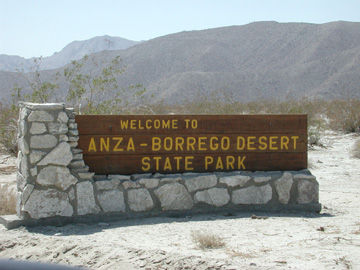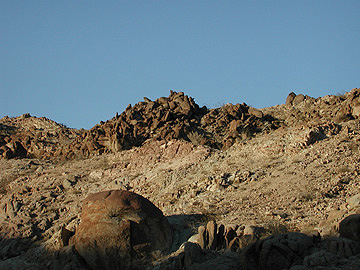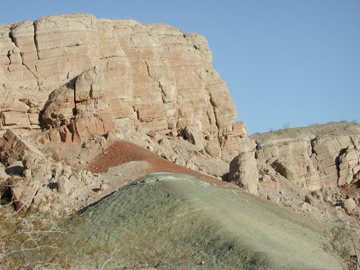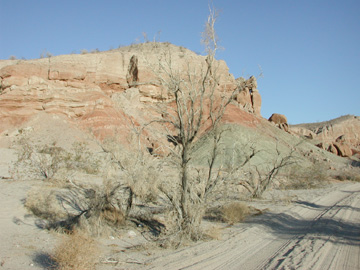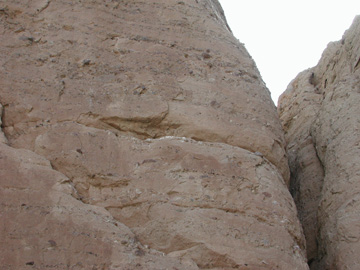Back to main page
Anza Borrego Desert State Park, Hawk Canyon RocksThe road traverses down a short steep grade into a sandy but usually hard packed wash where there is a left turn into Hawk Canyon. The main road continues on to San Felipe Creek Wash; the Hawk Canyon side road continues only about 0.7 mile to its dead end. From the narrow opening through a smoke tree wash, the canyon opens up slightly in the canyon bottom. The south side of the canyon is dominated by sheer walls of sedimentary rock, 120-150 feet ( 36-45 m) high. The north side is a steep-sided slope of granitic-derived rock. From: Michael U. Evans, "Hawk Canyon," in Barbara W. Massey, Guide to Birds of the Anza Borrego Desert (Borrego Springs, CA: Anza Borrego Desert Natural History Association, 1998), pp. 85-7. |
|
|
 On August 1, 1974, Secretary of the Interior Rogers C. B. Morton approved Anza-Borrego Desert State Park for inclusion in the National Registry of Natural Landmarks. Sites in the Registry possess exceptional value as illustrations of our nation's natural heritage. Anza-Borrego, the largest Desert State Park in the nation, contains some of the vest examples of the desert biotic communities in the Colorado Desert. |
|
|
|
|
|
|
|
|
|
|
